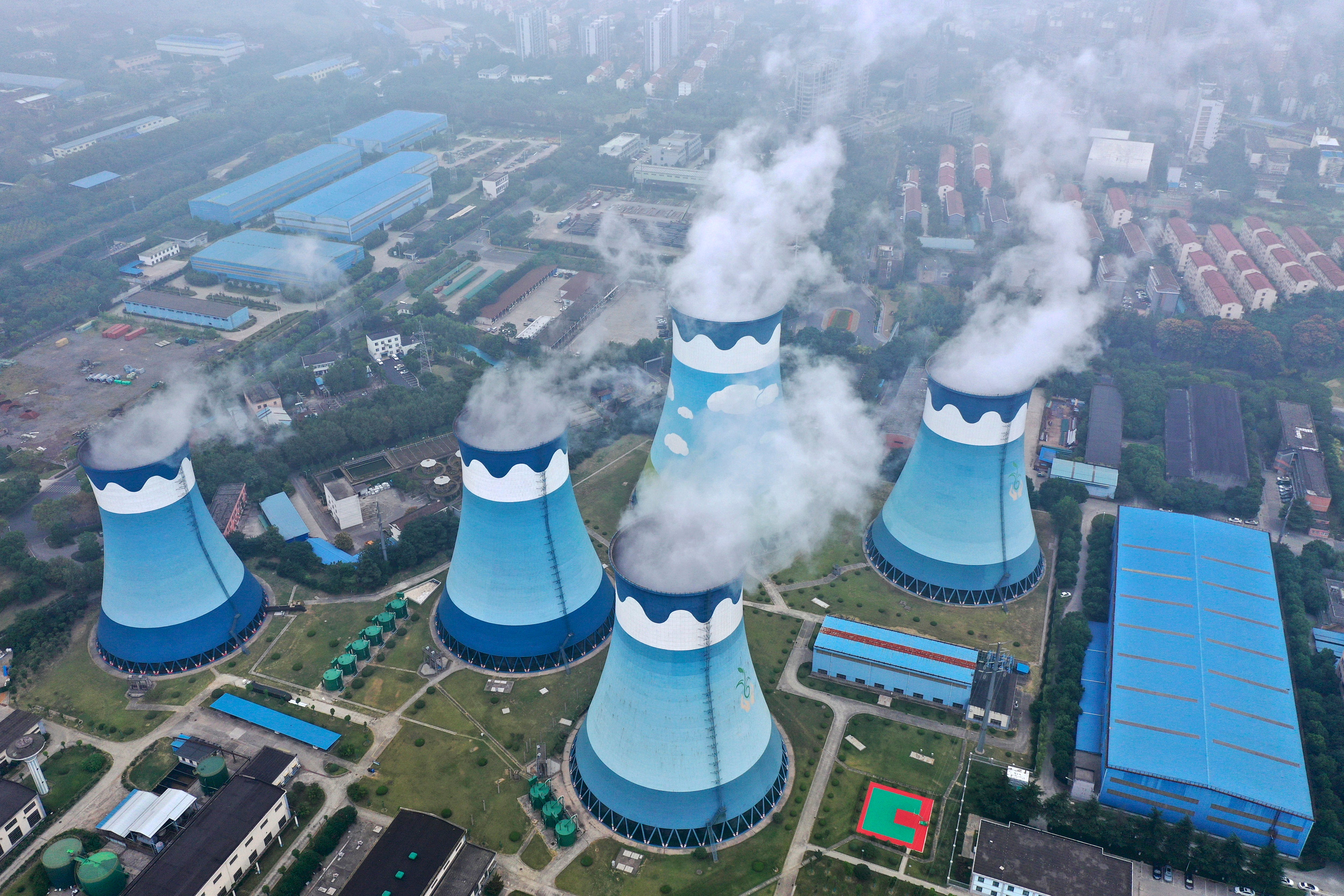Mysterious China power crunch sees potentially millions of homes in the dark and global supply chains cut
A post by a power company said the crisis could last until until spring 2022 - but the message has since disappeared

A widespread power crisis in China threatens to become the “new normal” as the country’s manufacturers and citizens alike face a potential cold, hard winter ahead.
Several of the country’s provinces have begun to ration power supplies in the face of shortage of coal supplies, increasing energy demands from manufacturers and consumers and tough emission standards.
China, which is increasingly dependent on coal, has ordered provinces to limit power consumption, as it prepares to host the Winter Olympics and strives to curb emissions.
This has led to unannounced power cuts for citizens in many provinces, who have taken to social media to complain about the lack of heating and public infrastructure, including lifts and traffic lights not working.
One power company said the power crisis would become “the new normal” and warned of power cuts lasting till next spring, reported the BBC.
However, the post was later deleted, according to the broadcaster.
The most severe impact of the power crisis has been seen in the country’s northeastern industrial belt, comprising of Heilongjiang, Jilin and Liaoning provinces.
Huludao city told residents to not use high energy-consuming electronics including microwaves and water heaters during peak periods, according to Reuters.
A resident of Harbin city in Heilongjiang told the news agency that several shopping malls shut earlier than usual at 4pm.
Twenty-three people were hospitalised with carbon monoxide poisoning after ventilation in a metal-casting factory was cut after a power outage in the northeastern city of Liaoyang on Friday, reported state media. No deaths, however, were reported.
The immediate effects of the power crisis have echoed in industry as well. Key suppliers of Apple and Tesla halted production in some plants.
Power-intensive sectors like aluminum smelting, cement manufacturing, steel making and fertiliser production have been hit as well.
At least 15 Chinese companies that produce goods ranging from aluminum and chemicals, said their production was curbed by power cuts.
The impact of the crisis will also be faced by industries as wide as furniture, soybean and dye producers.
Seven per cent of the country’s aluminum production capacity has been affected and as much as 29 per cent of its cement production has suffered, Morgan Stanley analysts, cited by Reuters, said on Monday.
This, even as the country tackles a trade dispute with Australia, the second-largest global coal supplier, curbing its coal imports.
China’s economy is “more driven by exports than any time in the past decade” and something official energy targets fail to consider, economists Larry Hu and Xinyu Ji of Macquarie Group said, according to the Associated Press.
Adding to the Chinese government’s woes, global leaders will soon be meeting for a UN environmental conference in the southwestern Kunming city in October after which there will be COP26 climate talks in November in Glasgow, Scotland, increasing pressure on the country to stick to its energy-efficiency targets.
While the power crisis has taken its toll on citizens only this month, early indications of the crisis have been witnessed since March, which is when the country had begun witnessing spikes in power prices, reported Reuters.
Authorities in Inner Mongolia, an autonomous region in northern China, had ordered heavy industries, including an aluminum smelter, to curb use so the province could achieve its first-quarter energy use targets.
Similar requests were made in Guangdong, a major exporting powerhouse province in the country’s south.
The power crisis has, thus, dealt a blow to near-term economic forecasts for the country, even as cuts in the country’s growth outlook loom large.
China’s third and fourth-quarter gross domestic product (GDP) growth forecasts were cut by Nomura to 4.7 per cent and 3 per cent, respectively, from its earlier 5.1 per cent and 4.4 per cent forecasts.
Nomura also reduced its full-year forecast to 7.7 per cent from 8.2 per cent.
“The power-supply shock in the world’s second-biggest economy and biggest manufacturer will ripple through and impact global markets,” analysts at the financial holding group said in a 24 September note.
China’s GDP growth in the fourth quarter could also be knocked off by one percentage point if production cuts prolong, warned Morgan Stanley analysts.
China has said it aims to peak its carbon emissions by 2030 and become a net-zero economy by 2060.
Join our commenting forum
Join thought-provoking conversations, follow other Independent readers and see their replies
Comments
Bookmark popover
Removed from bookmarks